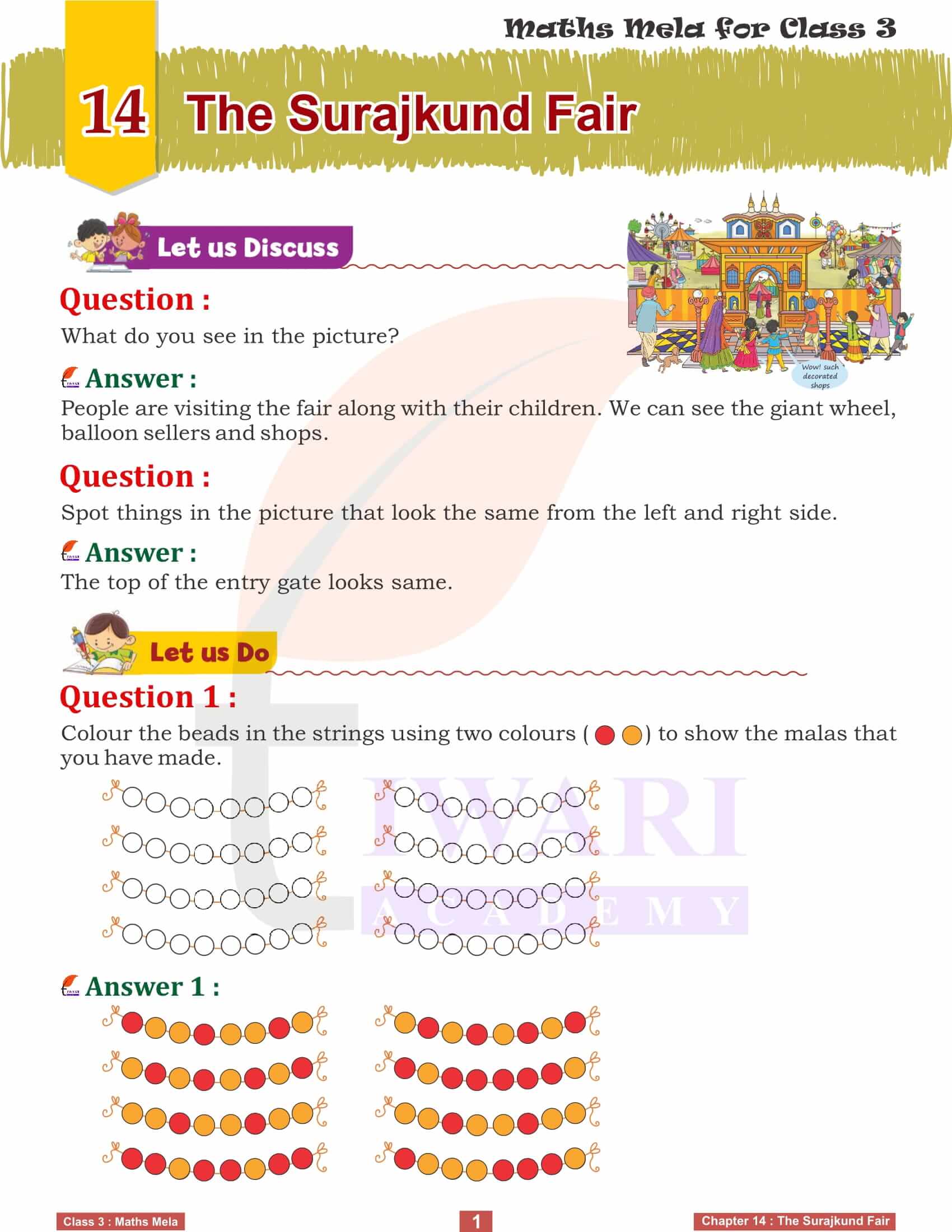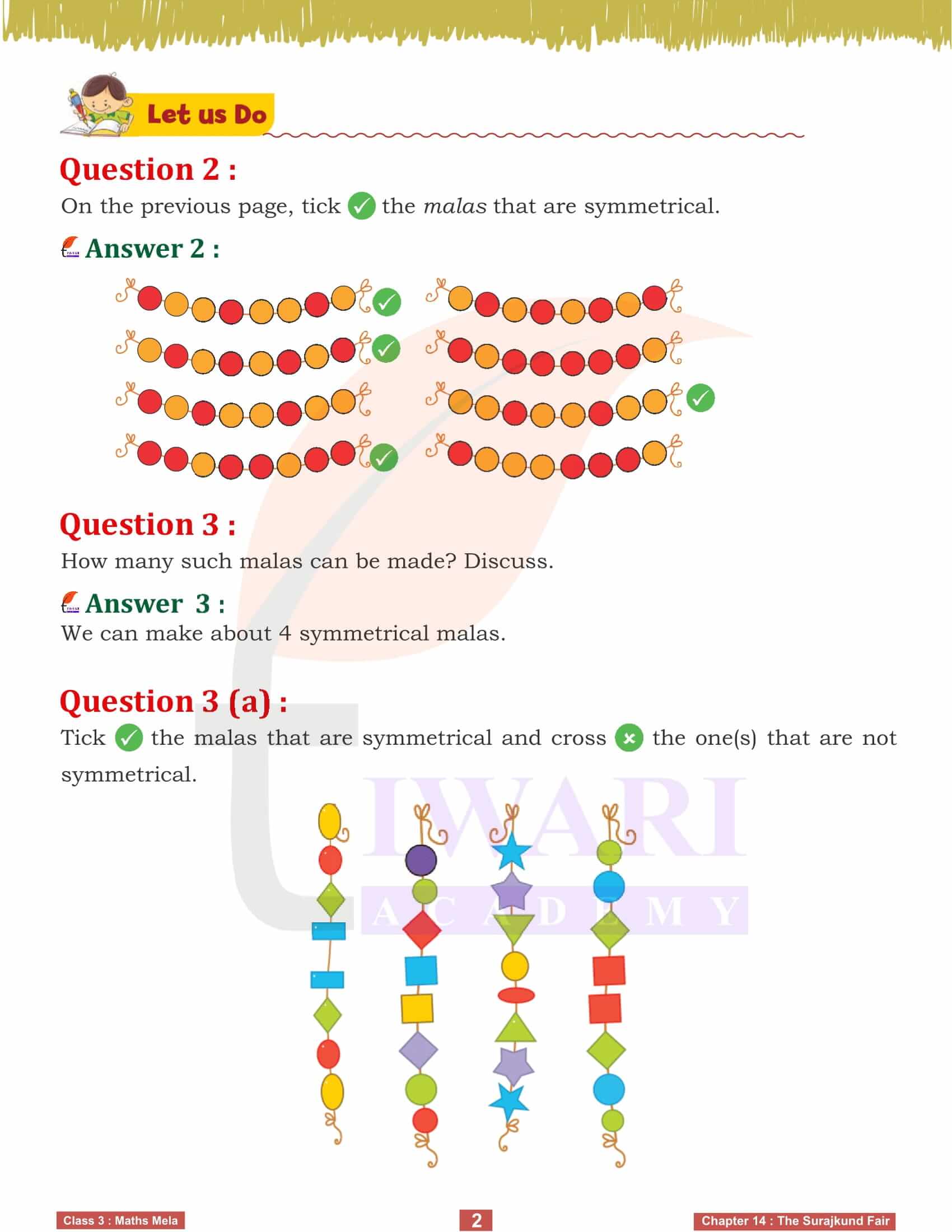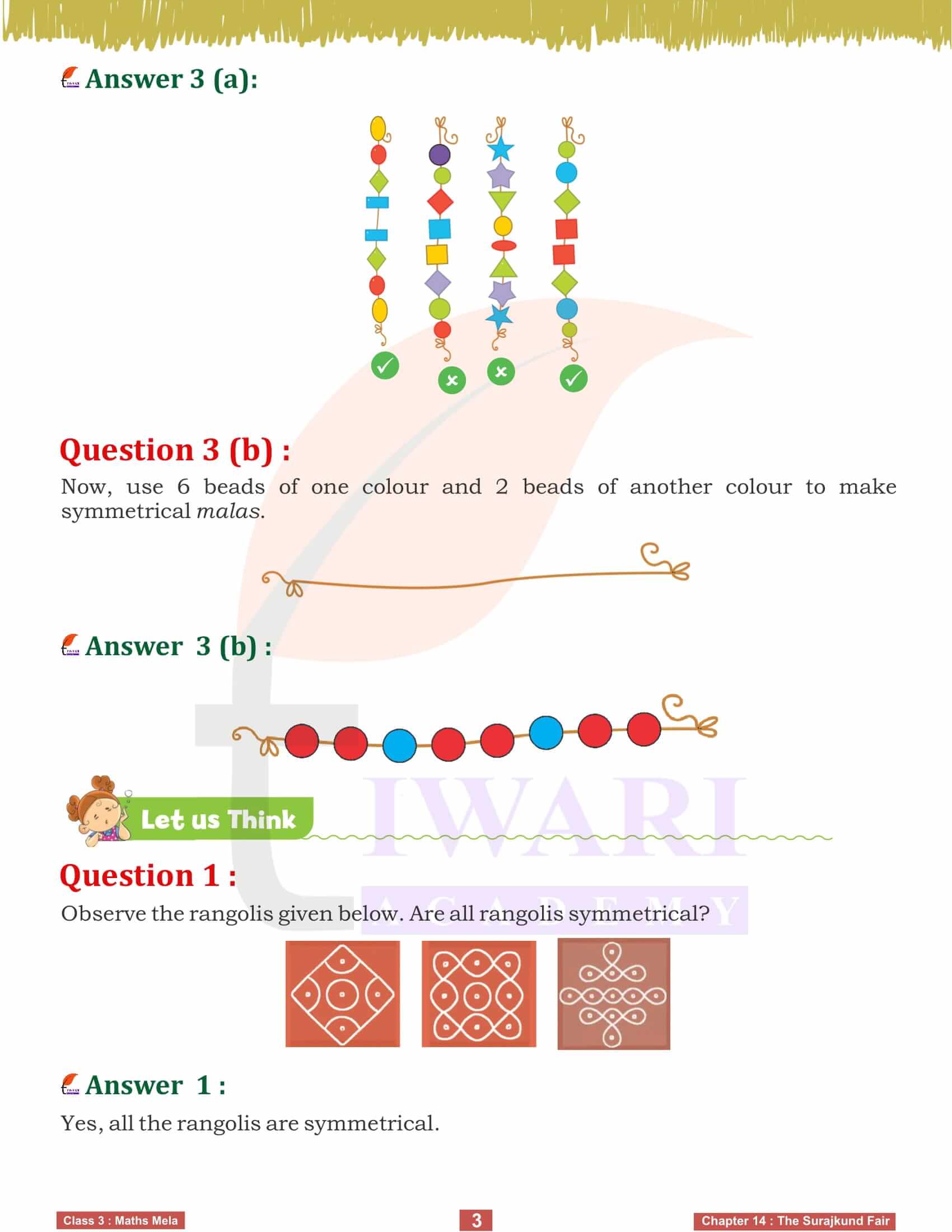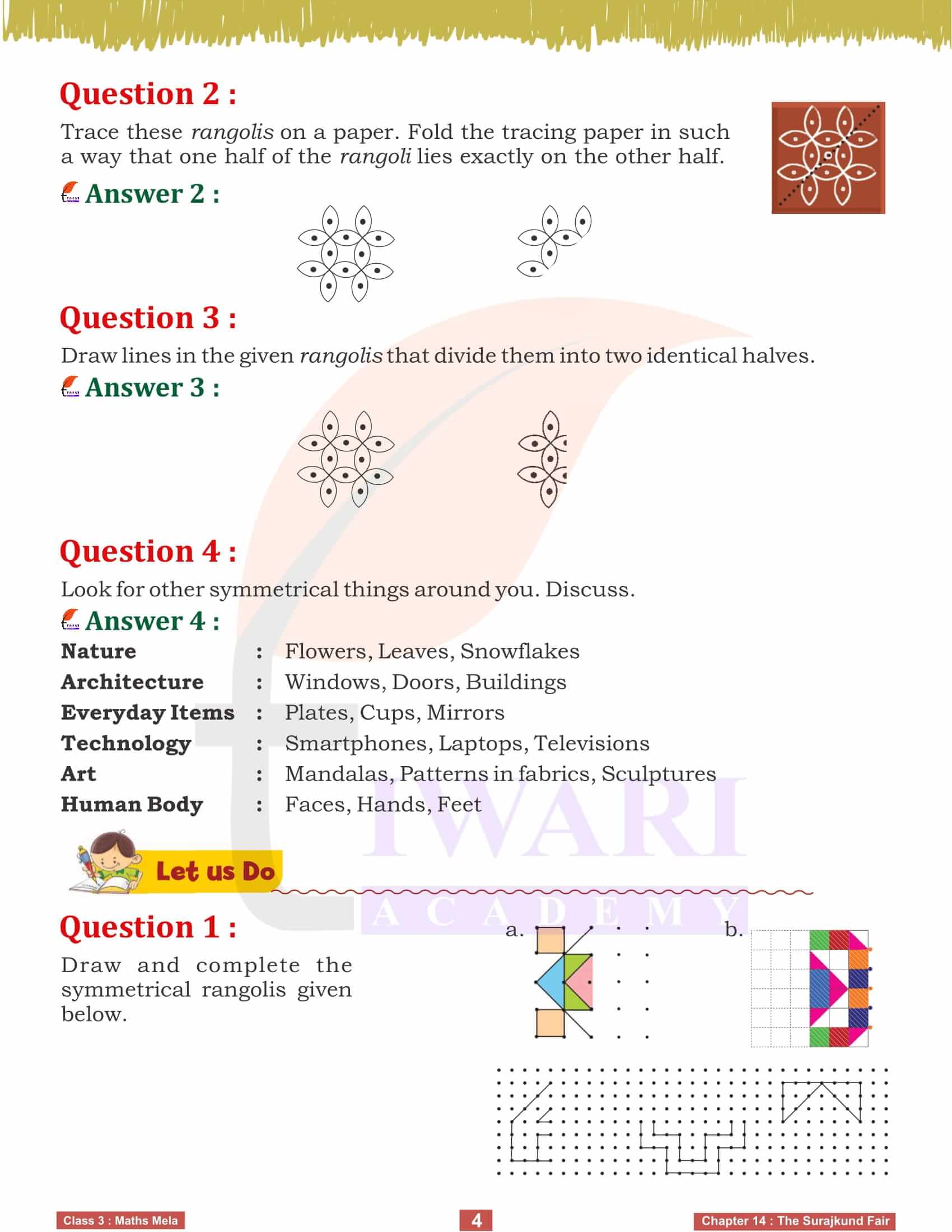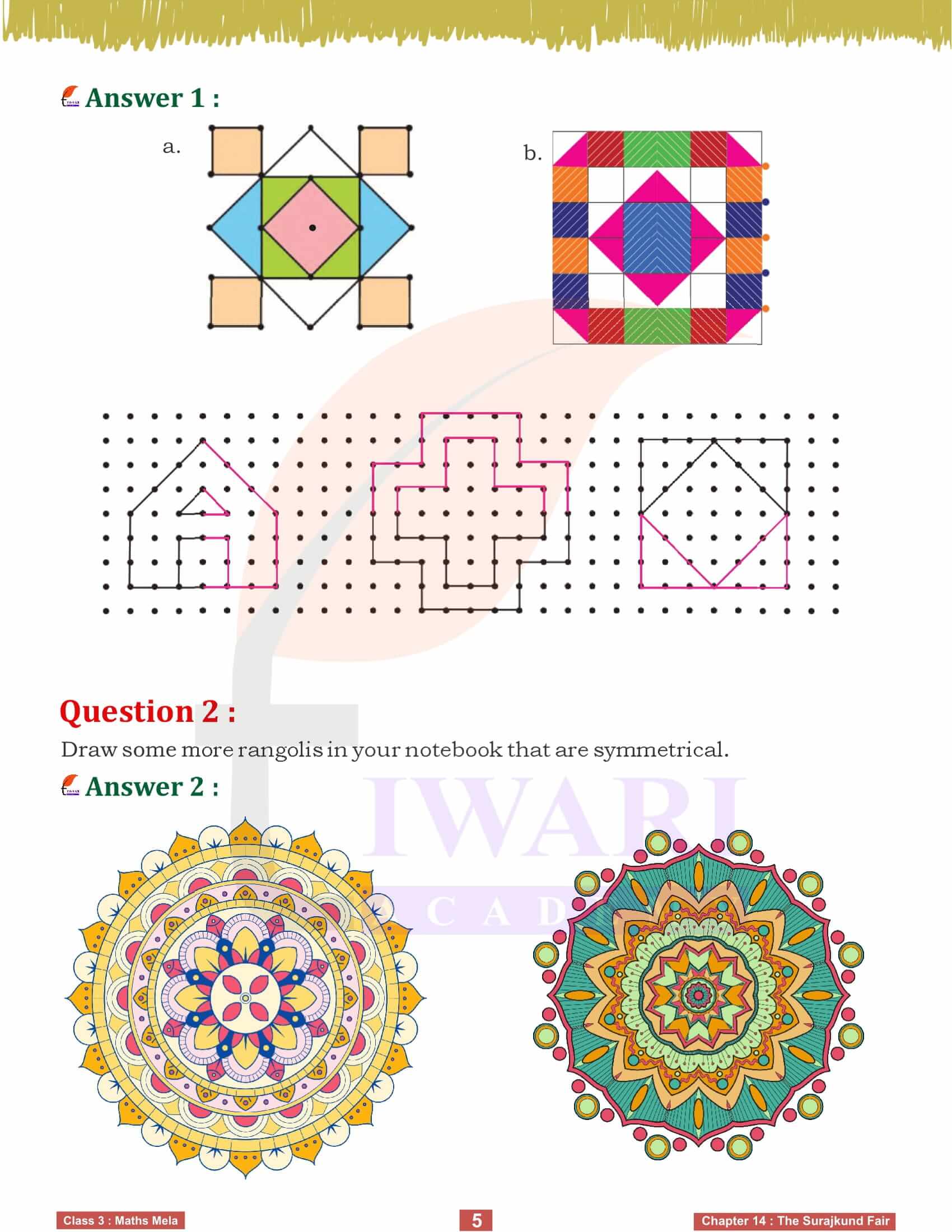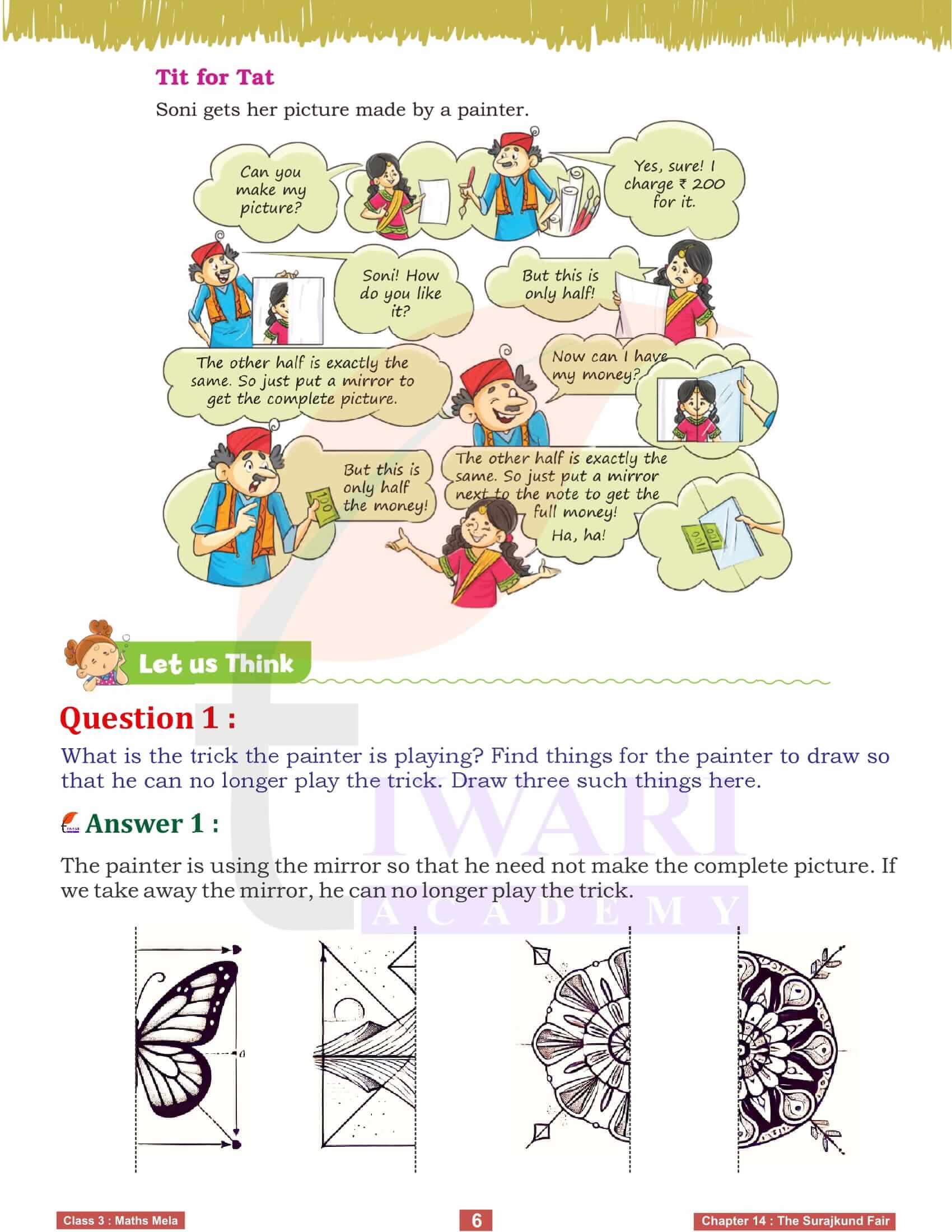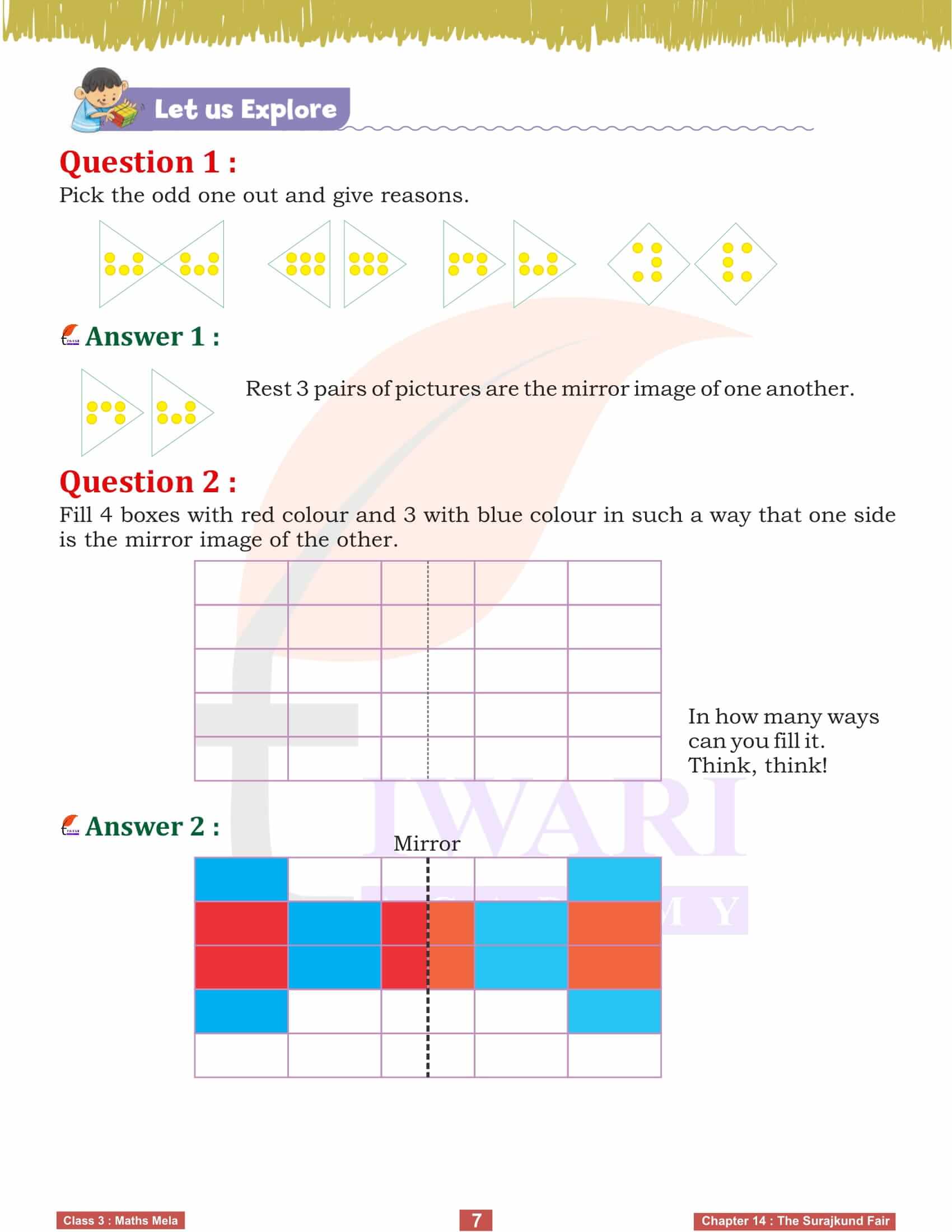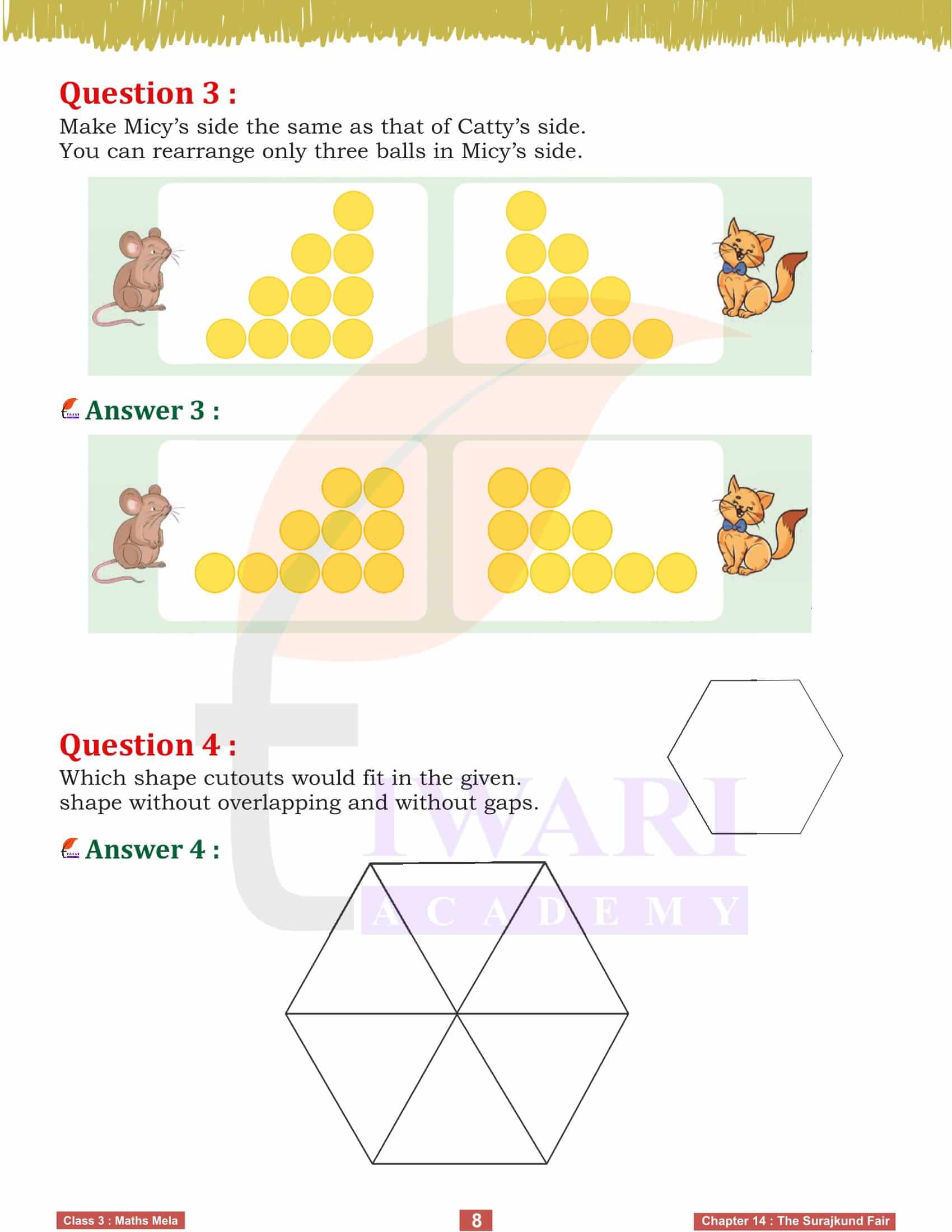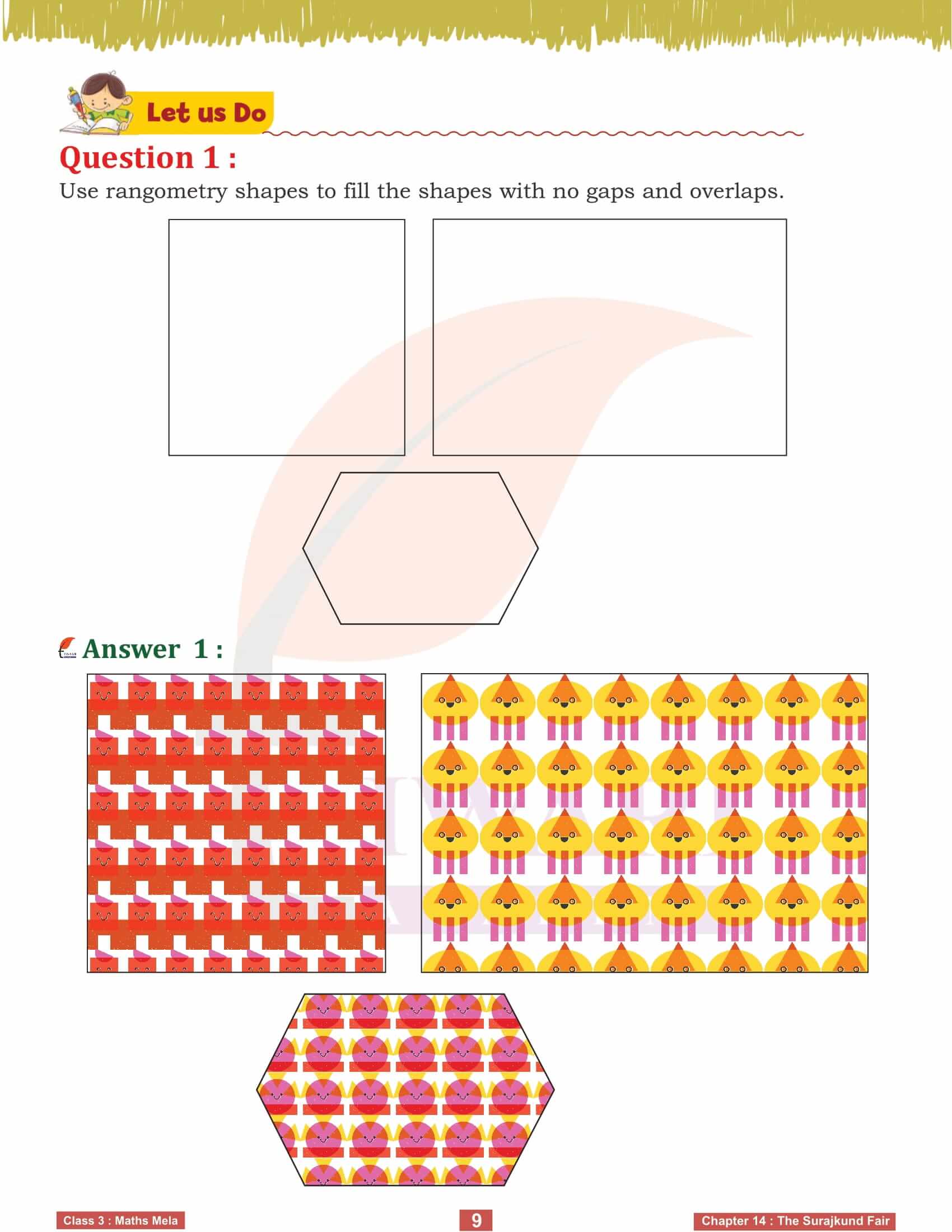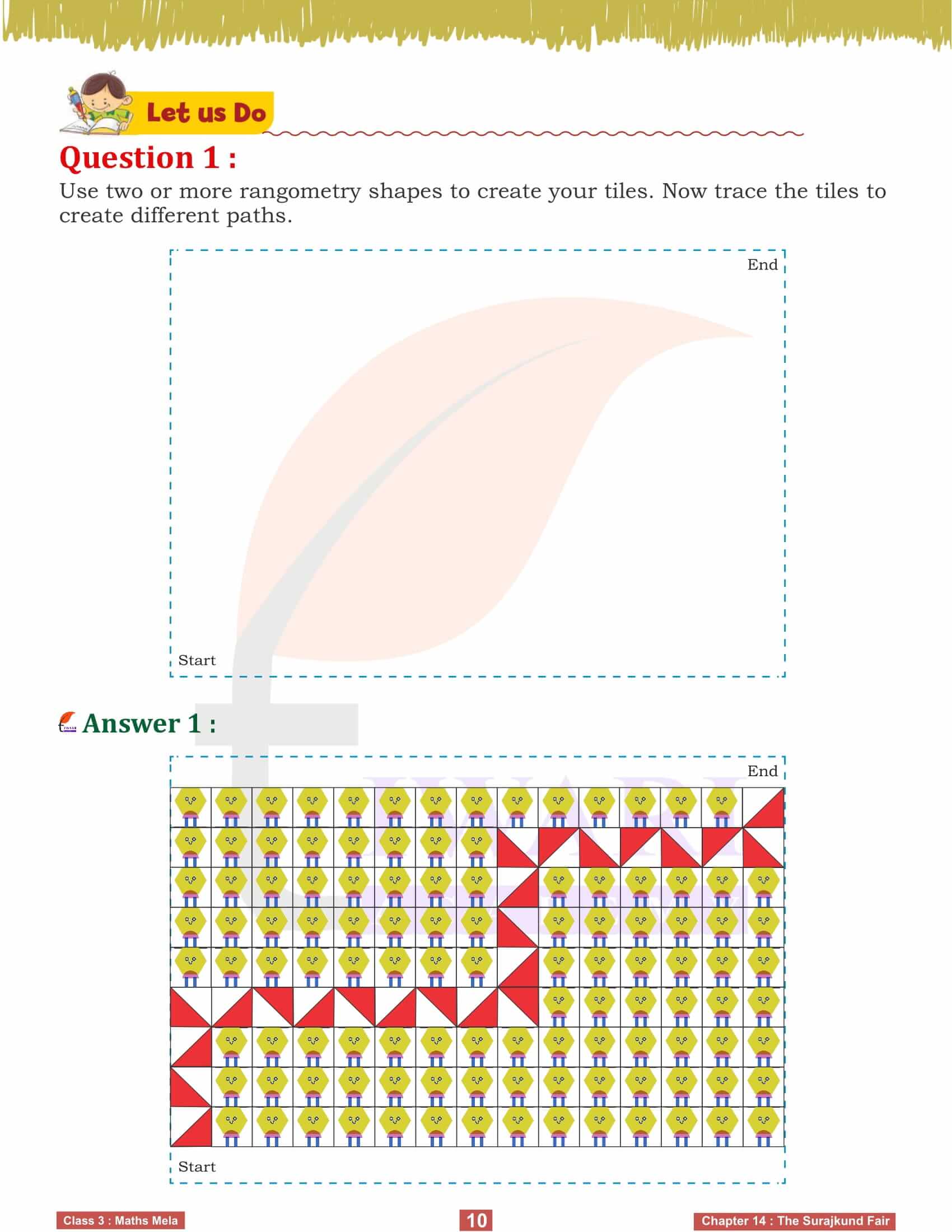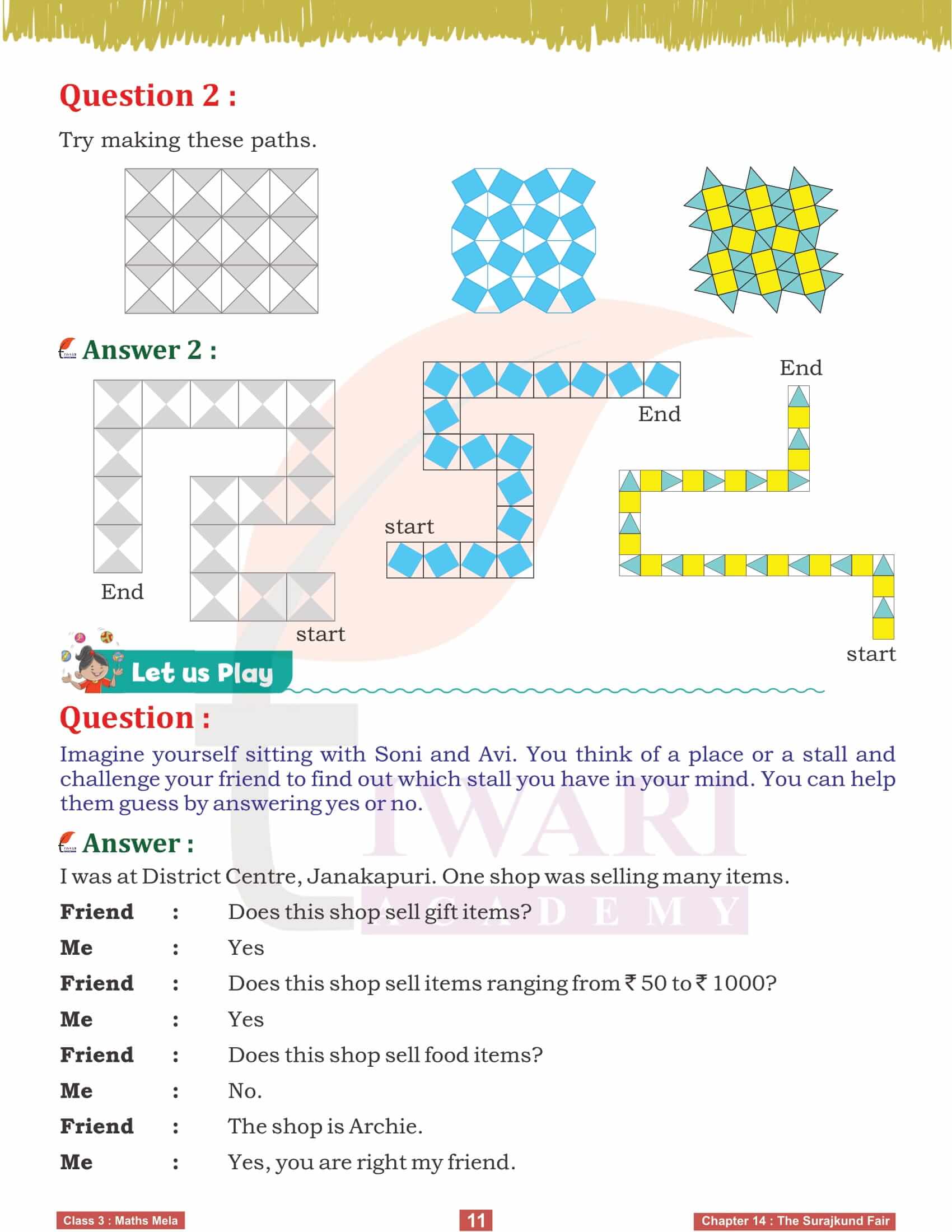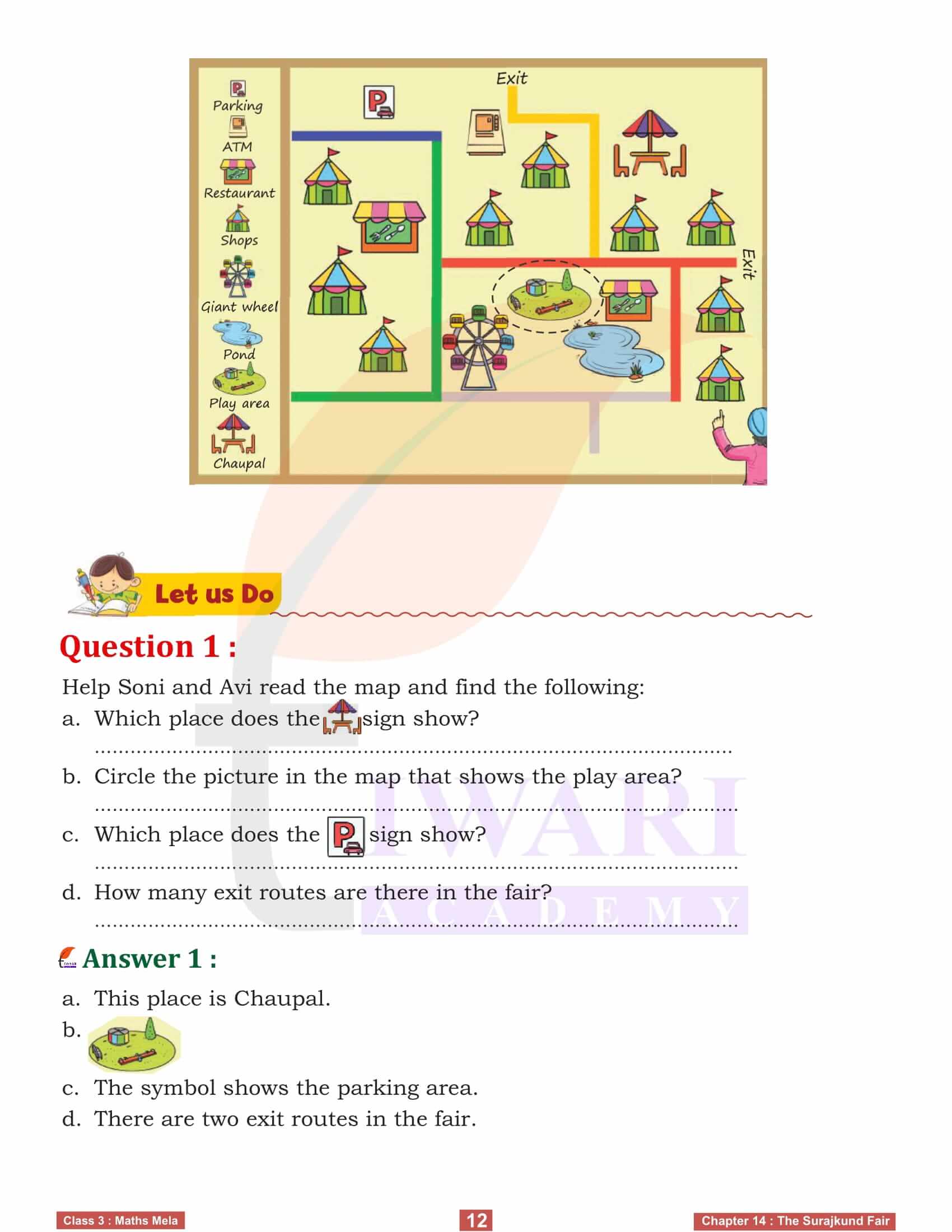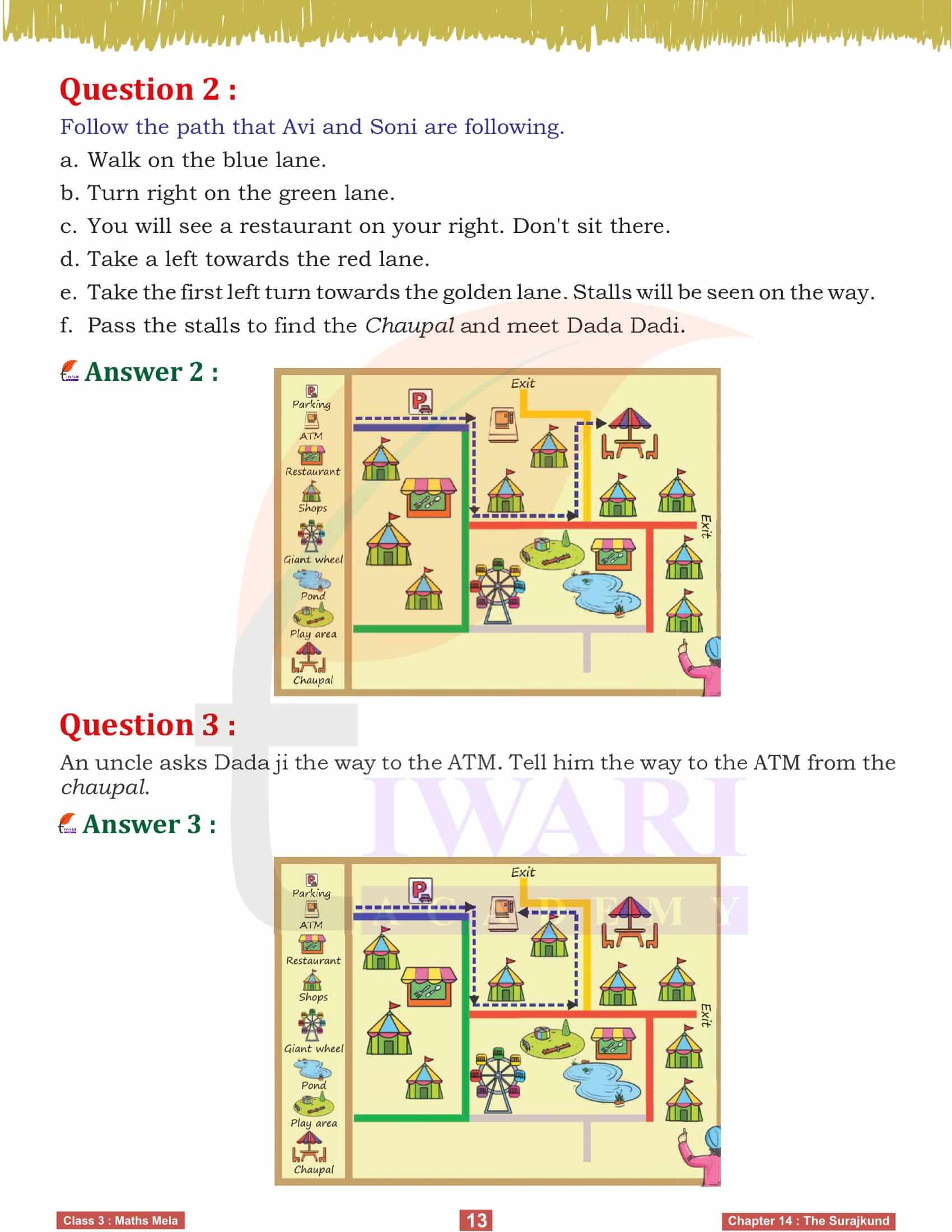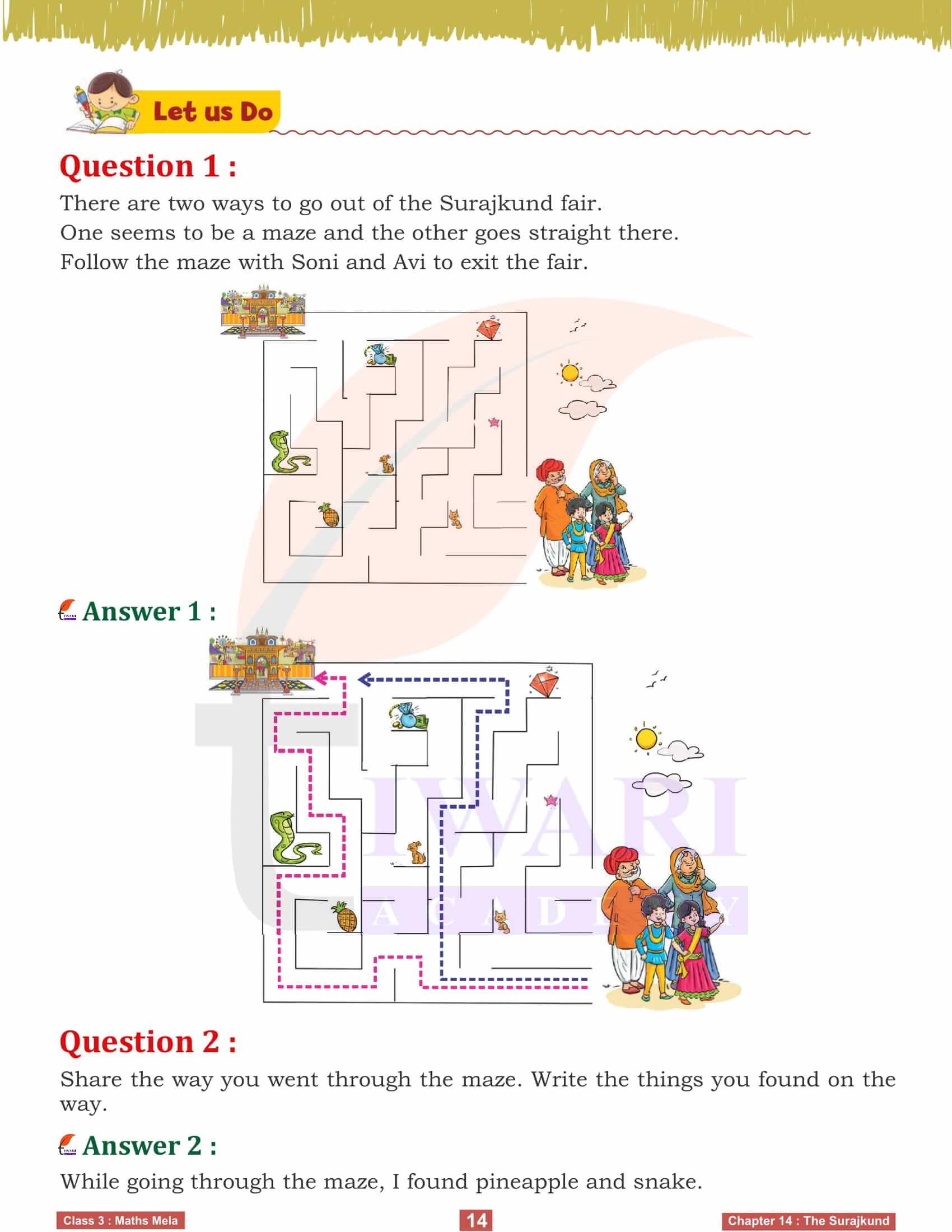NCERT Solutions for Class 3 Maths Mela Chapter 14 The Surajkund Fair in Hindi and English Medium updated for session 2025-26. The final chapter uses the Surajkund Fair to integrate various mathematical concepts learned throughout the book. Students apply their knowledge of numbers, shapes, patterns, measurements and data handling in the context of the fair. Activities include planning a visit, managing budgets and exploring the fair’s attractions, providing a comprehensive review and practical application of their math skills.
Study Plan for Class 3 Math
Class 3 Maths Mela Chapter 14 The Surajkund Fair
Chapter 14 The Surajkund Fair – Introduction
In Chapter 14 of Class 3 Maths, The Surajkund Fair, students are introduced to the vibrant and culturally rich environment of the Surajkund Fair in Faridabad, Haryana. This chapter aims to engage students by merging mathematical concepts with real-life experiences at a fair. The story follows Soni and Avi as they explore the fair with their grandparents, offering students an opportunity to learn about symmetry, patterns, and measurements through various fair activities and stalls. By integrating storytelling with mathematical exercises, the chapter makes learning interactive and enjoyable.
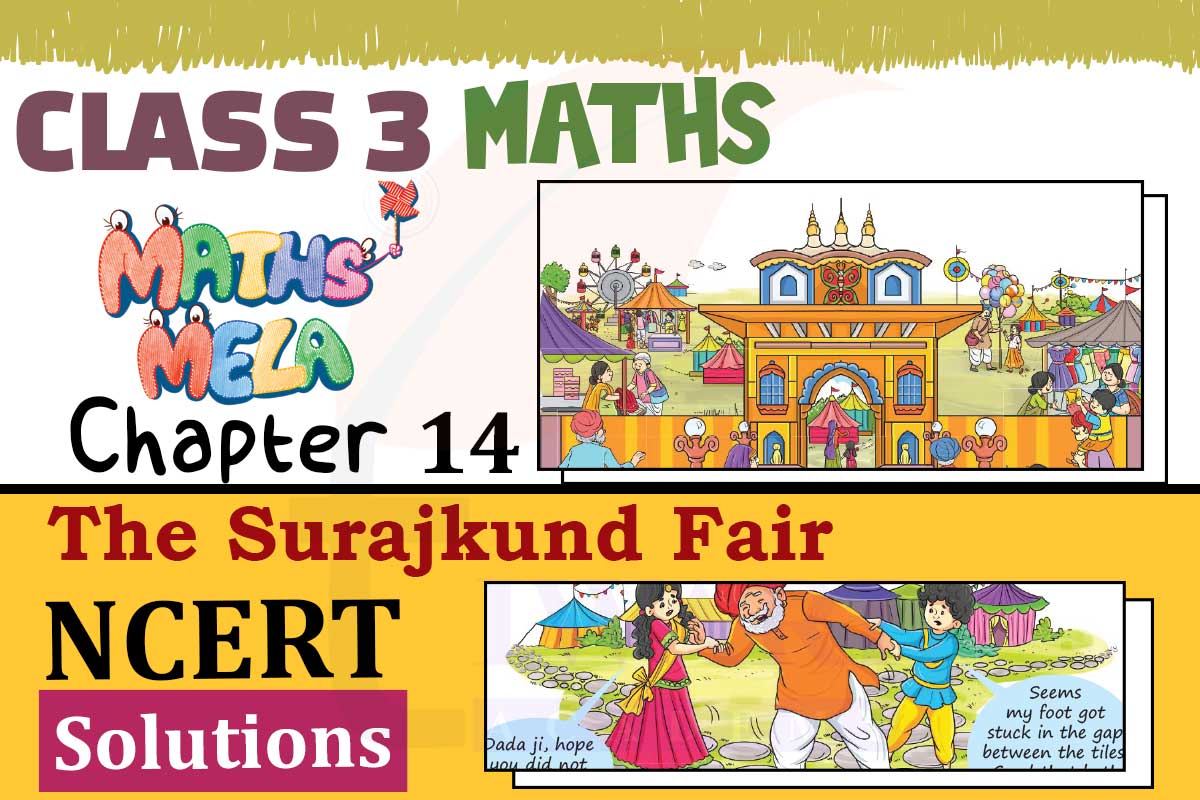
Symmetry and Bead Necklaces
One of the key activities in the chapter involves making bead necklaces, or malas. Soni and Avi encounter a stall where beads are used to create symmetrical patterns. The students are tasked with making their own malas using a specific number of beads of different colors, ensuring that the patterns they create are symmetrical. This exercise helps students understand the concept of symmetry, as they identify and create symmetrical and non-symmetrical patterns. They learn to recognize and appreciate the balance and harmony in symmetrical designs, which is a fundamental concept in both mathematics and art.
Exploring Rangoli Patterns
The chapter 14 further explores symmetry through the traditional art of Rangoli, specifically focusing on kolam designs from Tamil Nadu. Soni and Avi visit a stall where they observe beautiful rangoli patterns and are encouraged to create their own symmetrical designs using a dot grid. This activity not only teaches symmetry but also highlights cultural traditions, encouraging students to appreciate the diversity and beauty of Indian art forms. By tracing, folding, and drawing rangoli patterns, students get hands-on experience in creating symmetrical designs, reinforcing their understanding of symmetry in a fun and culturally enriching way.
Making and Analyzing Masks
Another engaging activity in the chapter involves making masks. Soni and Avi are fascinated by the variety of masks at the fair and decide to make their own. Through this activity, students learn about symmetry by folding paper and ensuring that the two halves of their mask designs are identical. The process of creating masks helps students understand the practical application of symmetry and its importance in creating balanced and aesthetically pleasing objects. This exercise not only teaches mathematical concepts but also stimulates creativity and artistic skills.
The Mirror Game and Spatial Awareness
The chapter 14 of class 3 Maths also includes a playful activity known as the Mirror Game, which helps students develop spatial awareness and an understanding of reflections. Soni and Avi use mirrors to create and check the symmetry of various objects and patterns. This game encourages students to think critically about how objects can be divided into symmetrical halves and how reflections work. By placing counters and checking their placements with mirrors, students gain a deeper understanding of symmetry and spatial relationships, which are crucial skills in both mathematics and everyday life.
Navigating the Fair and Understanding Directions
The chapter emphasizes the importance of understanding directions and spatial navigation. Soni and Avi navigate through the fair using directional clues and maps, teaching students how to read and interpret maps. They learn to use terms like left, right, forward, and backward to find their way, enhancing their spatial reasoning and problem-solving skills. This activity not only makes learning about directions practical and interactive but also prepares students for real-life scenarios where they need to navigate and understand spatial layouts.
Chapter 14 of Class 3 Maths, The Surajkund Fair, effectively combines mathematical concepts with cultural and real-life experiences. Through a variety of engaging activities such as making bead necklaces, creating rangoli patterns, designing masks, playing mirror games, and navigating the fair, students learn about symmetry, patterns, spatial awareness, and directions. These activities make learning interactive and enjoyable, helping students understand and apply mathematical concepts in fun and meaningful ways. The chapter succeeds in making mathematics relatable and exciting, fostering a deeper appreciation for the subject among students.
Related Links
